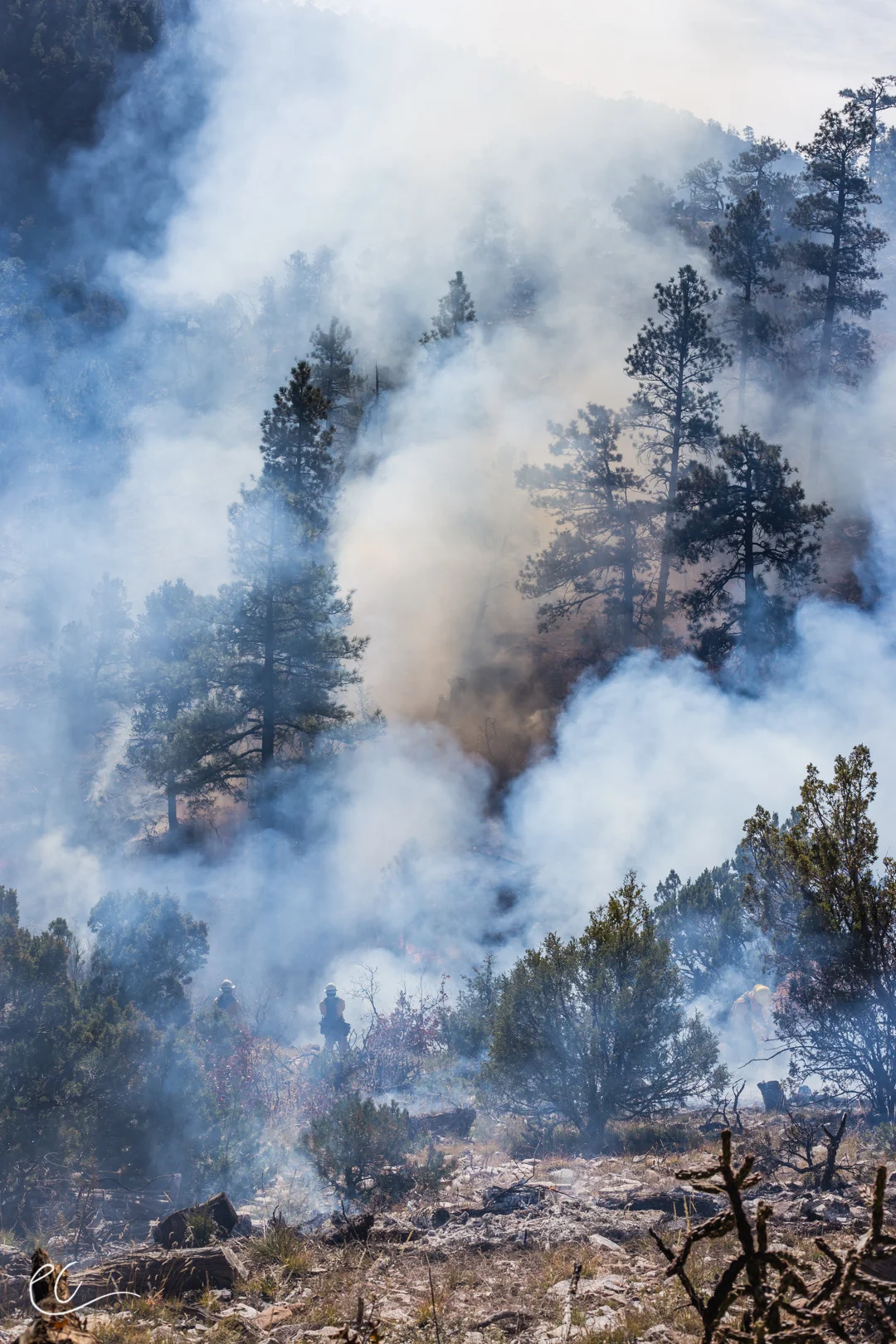COVID-19 has put more emphasis on how we prepare for wildfire smoke.
Smoke preparedness to protect your-self and your family has taken on a new importance with the compounding impacts of the respiratory illness from the coronavirus pandemic. Although not wildfire smoke specific, recent scientific studies from Italy and the UK (Conticini et al., 2020external icon & Travaglio et al., 2020external icon) suggest that air pollutant exposure worsens COVID-19 symptoms and outcomes. This research is part of the reason why land managers have adjusted their tactics this year to try and limit smoke impacts on communities as much as possible. (see our interview with an FMO for more)
Please visit these resources from the CDC for more information:
Wildfire Smoke and COVID-19: FAQs
COVID-19 and Wildfire Smoke Cleaner Air Spaces
Smoke from wildfires and prescribed fires is a serious concern as it can cause and exasperate health conditions for those of us that endure it. However by living in the fire adapted ecosystems of northern New Mexico we must accept that wildfire and smoke is inevitable.
ABOUT SMOKE
Smoke is a complicated mixture of materials in the air including particulates of various sizes and gases that are released as materials burn. The emissions vary depending on what material is burning and whether it is smoldering or in flames. Smoke generally consists of carbon monoxide, carbon dioxide, water vapor, hydrocarbons, other organic chemicals, nitrogen oxides, trace minerals and particulate matter.
Particulate matter consists of solid particles and liquid droplets suspended in the air. Particles with diameters less than 10 microns are upper respiratory tract and eye irritants.
Smaller particles (2.5 PM) are the greatest health concern – they can be inhaled deep into the lungs, and can affect respiratory and heart health. (HEPA filters remove particles down to .3 PM)
Carbon monoxide, a colorless, odorless gas produced by incomplete combustion, is a particular health concern and levels are highest during the smoldering stages of a fire.
Smoke causes a variety of health problems including:
Eye, nose, and throat irritation (burning eyes and runny nose).
Wheezing, coughing, shortness of breath, and headaches.
Aggravation of existing lung, heart and circulatory conditions, including asthma and angina.
For more information check out this factsheet that reviews current research on smoke effects on public health. Click here
Interactive smoke map from Air Now
by the Environmental Protection Agency
This map shows the Air Quality Index (AQI) which is a monitor of the quality of the air and it's potential impacts on your health, as well as most active wildfires and some smoke plumes from wildfires. For more information click on the side bar in the map or visit the map on it's home page.
Resources:
General Smoke Information:
New Mexico Fire Info, Smoke Management - New Mexico Fire Information - an interagency effort by federal and state agencies in New Mexico
Air Now, Interactive Map of Smoke Monitors & Fire Current Conditions - Environemntal Protection Agency
Protect Your Health on Smoky Days - from New Mexico Environmental Public Health
Wildfire Smoke Frequently Asked Questions - Environmental Protection Agency
New Mexico’s Smoke Management Program - New Mexico Environment Department’s Air Quality Bureau
Prescribed Fire and Smoke
By intentionally setting fires we are reintroducing fire under carefully prescribed conditions that limit impacts of smoke compared to the uncontrolled conditions of a wildfire. One of the many purposes of using prescribed fire is to limit the possibility of large wildfire events and their great smoke impacts.
Smoke mitigation of prescribed fire is considered from the beginning planning phases all the way to the day of a burn. A plan is created that defines communities that would be impacted and identifies the strict conditions under which a burn must be carried out to minimize these impacts. Fire managers must obtain a permit from the New Mexico Environment Department’s Air Quality Bureau and closely monitor conditions to determine the optimal time to burn. During a burn smoke is closely monitored and if adverse impacts are observed the burn may be postponed or lighting patterns may be changed to alter the generation of smoke.
Some smoke is unavoidable during prescribed fire operations though so, the Greater Santa Fe Fire Shed Coalition is creating a HEPA filter loan system to assist people with smoke sensitivities. HEPA filters have been shown to greatly reduce the impacts of smoke inside your home.
SEMINAR:
Smoke Impacts: Wildfire vs. Controlled Fire & How to Reduce Smoke Impacts in your Home
This was a seminar held in Santa Fe on April, 18th 2018 addressing Smoke Impacts in the Greater Santa Fe Fireshed Area. It was presented by Josh Hall, the Air & Water Quality Specialist for the US Forest Service in the Southwest Region. You can view his presentation below:
The information on this page is from the Environmental Protection Agency, the Washington Department of Health.



